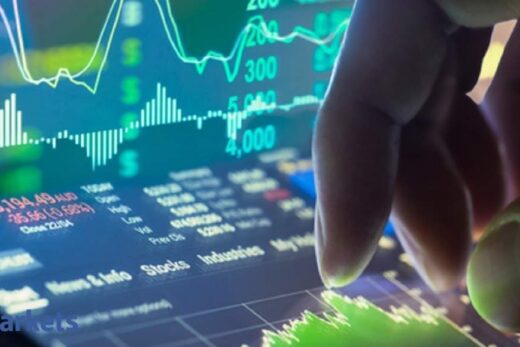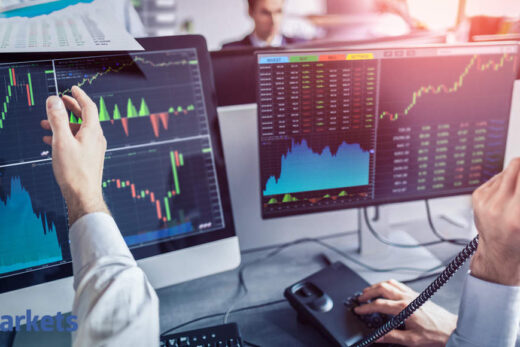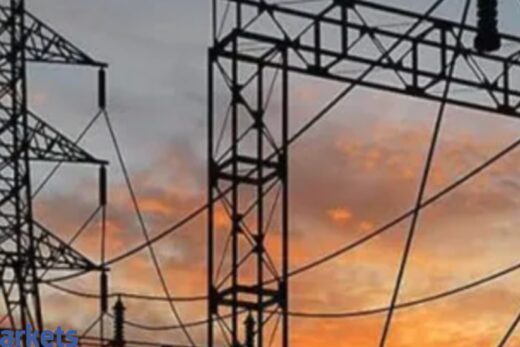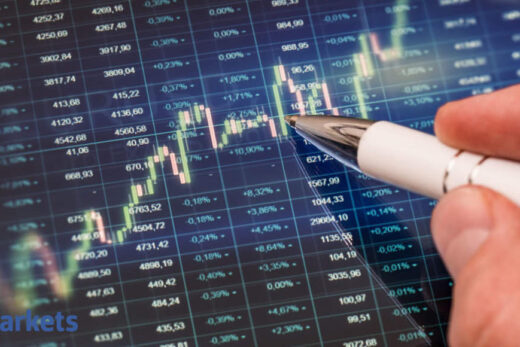The Adani Group explained to the exchanges on Monday that there is no ban on any of the FPI accounts. Even though it is dated news, let us start with it and then move forward?
Absolutely. Our clarification is related to the fact that as far as we are aware, there is no restriction on the accounts of the concerned investors. Beyond that, naturally this question is valid for investors but overall we are pushing forward in relation to our investor management programme and opening up our share register to new investors, the case in point being Adani Total Gas where Adani family has 37.4% stake and strategic investor plus global investors like Blackrock, Norges etc, California State have about 42%. Our registers are expanding and as the companies’ mature, like in the case of Adani Ports, we expect it to be reflective of the wider participation by infra investors. We are very confident that over the next three to five years, that will be achieved.
Does this concentration really bother you? There are some funds where the ownership of their holdings and Adani Group is as high as 75-80%. Clearly, risk management would come into play. How are you planning to address that?
The investment risk is for fund managers to manage, I cannot comment on that. What I can comment on is that Adanis remain long-term investors. In fact, we are inter-generational investors and we are invested for 30, 50 years. For us, sustainable investment is important so we will remain as core investors.
Other than that, we will continue to expand our relationship with strategic investors like Total, QI and with global institutional investors like BlackRock, Vanguard, Norges etc. We are not concerned by this. Our key focus remains on the underlying performances of our businesses. We have built very solid businesses and those businesses are massive cash flow positive, high profit margins, high EBITDA margins and in last 25 years, by the efforts of our business verticals we have been able to build India’s largest infra and utility platform and one of the top ten infra and utility real estate platforms in the world.
It is a very proud moment for us to be able to say that in the infra space, a top 10 global platform has emerged from India. We will continue to work on that. We ourselves are long-term investors. We are major investors with over 60% in most of our companies. We are not too concerned about specific concentration elements.
While you have invested a lot in the port business, in the gas business, in the airport business you have also got a consolidated debt of over Rs 1,25,000 crore. How are you planning to address that?
We do not look at that from a group perspective. The number you have quoted is portfolio level debt. It sits in various verticals. We have two core areas that we invest in; transport and logistics and utilities and energy. In the transport and logistics which is APSEZ and our other smaller transport companies, we have a debt to EBITDA of about 3.1 to 3.3 times. Globally, for large port and transport companies, the 3-3.5 multiples is below average.
If you look at our energy and utility platform and you pick up the top five utility platforms in the US, then our utility platform has debt to EBITDA of 4.4 times and the average in the US is five times. Now somebody can say that the US has lower interest costs and therefore five times is okay but at 4.5 times debt to EBITDA, we are growing at over 12% and the US platforms grow between 2 to 4%. So our gearing is already less than our peers and we are growing at least three to four times faster than our peers on a global basis.
How much of your cash flow projection is likely to change given that a lot of your businesses are reaching scale and size like the gas business, the port business and even the airport business?
For us, the rate of return on assets employed is the key metric. For example, last year, at the portfolio level. our EBITDA grew 22%. We are pretty much what we have — our various verticals. This year we expect that growth to be in line or slightly higher than what we did this year. So our underlying EBITDA, cash is growing at a much faster rate than the industry peers.
In fact, we expect to double our free cash generation and are deleveraging as a group. Just to give you a data point, five years ago in 2014-2015, the portfolio level debt to EBITDA was approximately eight times; today it is 3.8 times. We have halved our leverage ratios and the deleveraging of debt to EBITDA is continuing and will continue at a rapid rate and this is also reflected in the credit quality. We are the only infra and real asset platform in the country whose assets like ports have the same credit rating as the government of India.
Adani Transmission, our utility business, has the same credit rating as government of India. In fact, the underlying credit rating of Adani Transmission is higher than India’s credit rating but we are capped at sovereign because we are 100% domestic infra business. AEM, which is our distribution company in Mumbai, also has a credit rating the same as India. Adani Green’s credit rating is the same as that of the government of India. So our businesses credit quality is reflective of the low leverage and conservative management style. We grow fast because we have high cash flow generation.
Will the corporate structure in terms of the companies and the fact that there is at the top, change or that is likely to remain like this for the next couple of years?
Adani Enterprises is basically an incubator and does not directly hold any one of our companies which like APS is or Adani Transmission. They are directly held by investors and the family. Adani Enterprise being the incubator business, currently our airport business, road business, data centre business, water business and solar and renewable manufacturing cluster are within Adani Enterprise. Once they achieve a certain scale and mature, we will demerge those businesses at appropriate time. Adani Enterprise does not have a gross shareholding relationship with any of our listed verticals.
We understand you are planning to take the airport business public. Is that true?
We do that all the time. All of our businesses have come out of Adani Enterprises but our current focus is on the business itself. Airports are a very important business. We would be India’s largest network airport operator with eight airports and over 100 million passengers and 300 million non-passengers visiting our airports. It is a very large consumer business. Our first objective is to set the business correctly and that we are focussed on that. It continues to be the core principle of our businesses that focus on the core element of the business. Our near term focus of the next two to three years is to set this business up correctly to service nearly 100 million passengers and 300 million non-passengers over a period of time with growth. So the focus remains on the 400 million consumers that will come there and maintaining safety and security and service standards. We believe that if we do the business elements correctly, then we will look at IPO or normal demerger a year down from once the business achieves fundamental stability that we like to have in our infra businesses. It is high cash flow generation, poised for growth with the ability to distribute cash to shareholders.
What is the internal benchmark which you want to run your various infrastructure businesses?
We have a risk-adjusted cost of capital for each one of our verticals. So the ports have a risk-adjusted cost of capital, airports, roads and data centre business. Similarly, transmission and distribution businesses all have separate costs of capital. The principle that we use is two fold; one is fundamental development at O&M excellence; two, we are committed to maintaining high credit quality which is investment credit, sovereign equivalent credit quality of our businesses. In relation to maintaining sovereign equivalent credit quality, we want to invest as long as we can do so at a return greater than our cost of risk adjusted cost of capital.
Recently, Adani Green made a $3.5 billion acquisition of Softbank Energy (SB Energy). We make those kind of investments on a risk adjusted basis. That is value additive to Adani Green and that is above our cost of capital. But Adani Green cost of capital is not similar to say Adani Port because of different businesses. We are very focussed, very disciplined about investing where we can beat our cost of capital, maintain credit quality and ensure business excellence.
Adani Green is the one where the price appreciation has skyrocketed.What would you say about Adani Green after the recent $3.5-billion SB Energy acquisition?
Look at the utility platform. Adani Green is part of the utility platform which includes four companies and one supporting manufacturing. These are
, Adani Transmission, Adani Total Gas and . At a platform level, we are growing at a rate of more than 12%.. Previously, we have grown slightly higher but less so. The free cash EBITDA of this platform is over $2.7 billion.
Now specific to Adani Green, when it started in 2015-2016, it had 500 megawatts capacity. Today, the development that we are executing on the ground is 25,000 megawatts and so the business itself has grown 50x.
We do not specifically look at share prices because as a business as a head off from this area of group investments and working with the vertical leaderships, I do not specifically look at that. Look at what has happened to the underlying business. It has grown 50 times and I am pretty sure that the share price has not grown 50 times from that period. That is reflective of the business growth and with this acquisition, next year we will have close to somewhere between depending on which month of the year, you pick between 8,000-10,000 megawatts of operating assets.
Traditional power business versus renewable power is a slightly different proposition because in the renewable space, the resource — which is in this case sunlight — is perpetual for all practical purposes and once we have the land allocation, it can be started. This business is a perpetual one and currently only focussed on power generation. It will also focus on decarbonisation of transport fuel as well. So once it gets through that, the growth runway of this business is much much higher than what a traditional power businesses.
This is also reflected in our investments so our investment is transaction as we discussed a $3.5-billion transaction with SBI which we have signed. That one transaction exceeds our total investment in conventional power business. So, the majority of our capital is going into this high growth perpetual renewable businesses in transmission and distribution. So share price is one thing. Business growth itself is 50x and that is reflected in the values.
Let me split the group businesses into three parts – young companies which you are incubating and which require capital, companies which are in their mid cycle and companies which are in their mature curve but are generating a lot of cash in terms of free flow. Which are the businesses you would split into these three packets?
Broadly speaking, in our core portfolio, all of our companies fall into the latter two buckets which is they are mature, generating high cash flow and have high growth. The reason is very simple. We are in India and the domestic market requires infrastructure. We are at the core of what India is, what various state governments, federal government wants to do, which is develop infra. We are in that sector. So we will grow faster.
First comes the mature companies. These are mature but fast growing like Adani Ports. It is one of our oldest companies that was listed in 2007. Our largest non-Mundra Port business grew 38% year on year in the last five years. Now within Adani Ports, is also the logistics business which itself will also grow at similar rates. We have had two businesses within Adani Port which are non-Mundra Ports and Logistics which over the period have grown at very high double digits.
Then comes Adani Transmission & Distribution. It is also a high cash flow generating and high growth business. Both the distribution and transmission businesses are growing at double digits. It also has massively cash flow plus positive business and high growth.
Adani Green Energy, is a high cash flow company. In fact, excess cash flow allows us growth and although that business will continue to require us to invest, it will not be distributing dividends. But from 2023-2024, it will do so because we have a pipeline which we announced last year with a target of 25 gigawatt by 2025, which we have already achieved. So that is a high growth business with high cash flow but less distribution cash because it is still massively high growth.
Adani Total Gas again is massively cash flow positive and also a high growth company. It will go from four cities to 39 cities. So that is one block of businesses.
Then we have mature businesses like Adani Power, a conventional power business where the growth is low and cash flow is solid. The new businesses where we need to invest are all within Adani Enterprise – airports, data centre, roads and Adani water. These four are very large and young businesses and that is where we are investing and we believe that roads and airports and data centres are one of the key growth areas in the future for India. These businesses are well poised for growth. We do not have a business that is a slow growing business beside Adani Power, a conventional power business.
Are you spreading yourself two thin — from water to airports, from managing railway stations to commodities, from power generation to power distribution?
Adani Ports, Adani Airports, Adani Roads or Railways are all in transport. They are either B2C or B2B transport businesses. This is close to what we do. We have been doing it for over 20 years now, closely following the transport chain. We are not going out of the transport and logistics share.
Then on the other side, there are the utilities and energy business. So Adani Green, Adani Transmission, Adani Power, Adani Total Gas, data centre business which is priced on power, Adani Water – -are all utilities which means that they are B2C or B2B but in utility space.. So we are sticking very closely to what we do best — transport and logistics and utilities and power. Occasionally we will have business that we have to set up to support these two areas but primarily 92% of our value comes from these two segments and almost exclusively approximately just close to 90% of our capex is in these two segments only.
We do not go outside our known competency areas of transport logistics and utility and energy those there are different verticals in those spaces. Covid has been a tough period for the country but we have invested in this period because we believe in the fundamental capacity of India to grow. We are linked to India’s GDP growth. I want to make an assurance to the public at large that India is poised for growth. We will get over this Covid period. We are firm believers in the power of the Indian consumer and Indian public and Indian growth.



